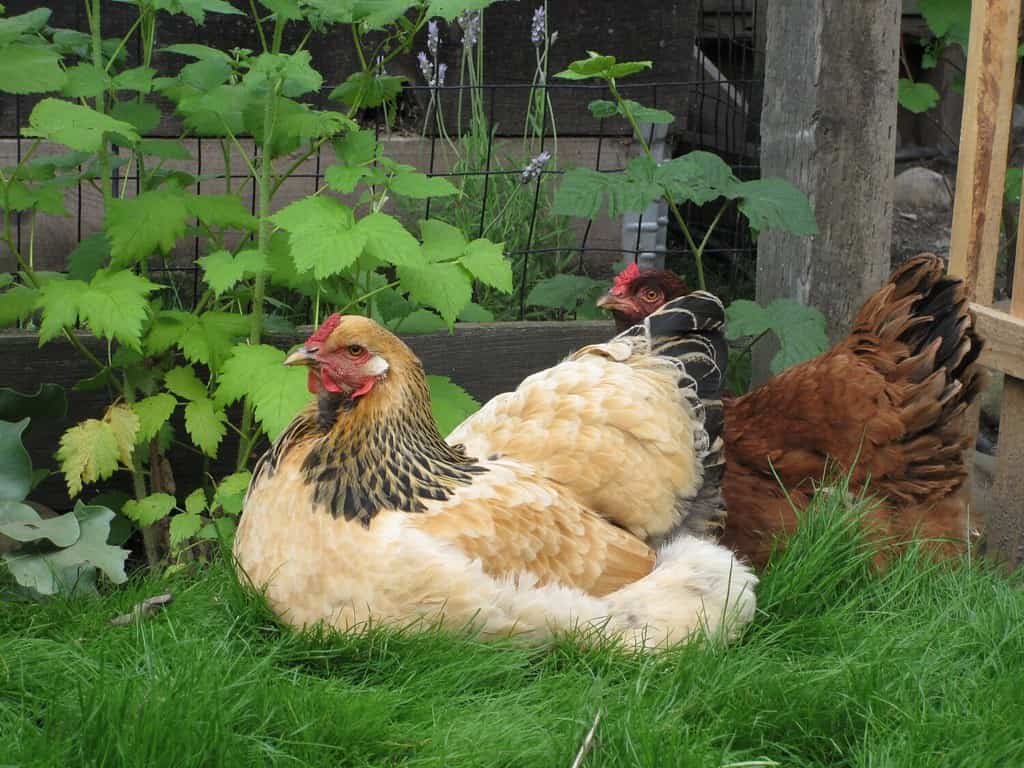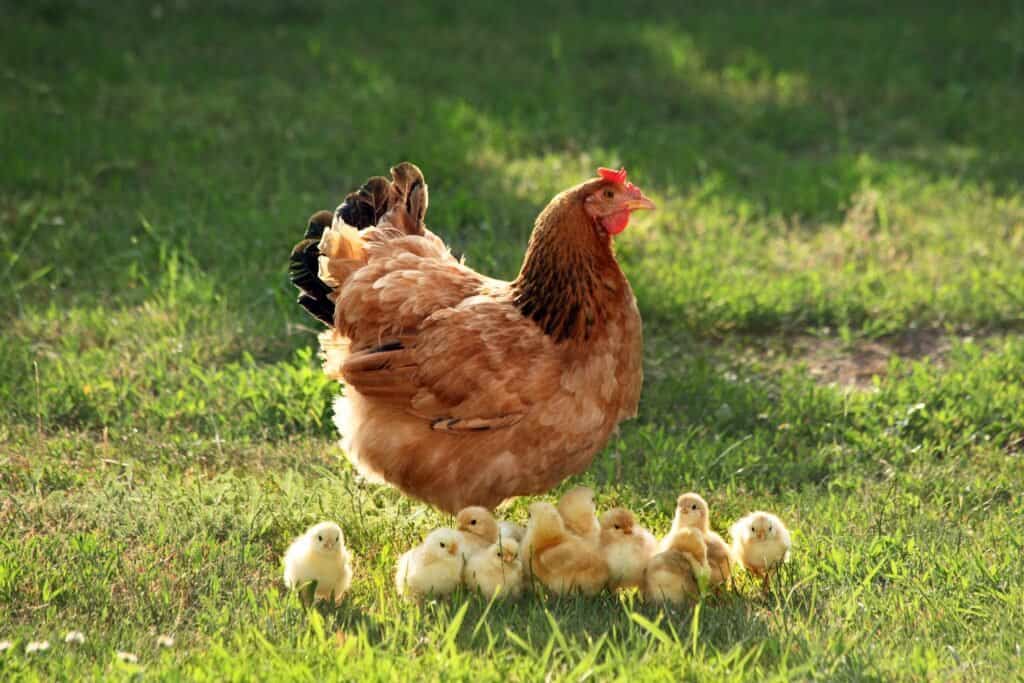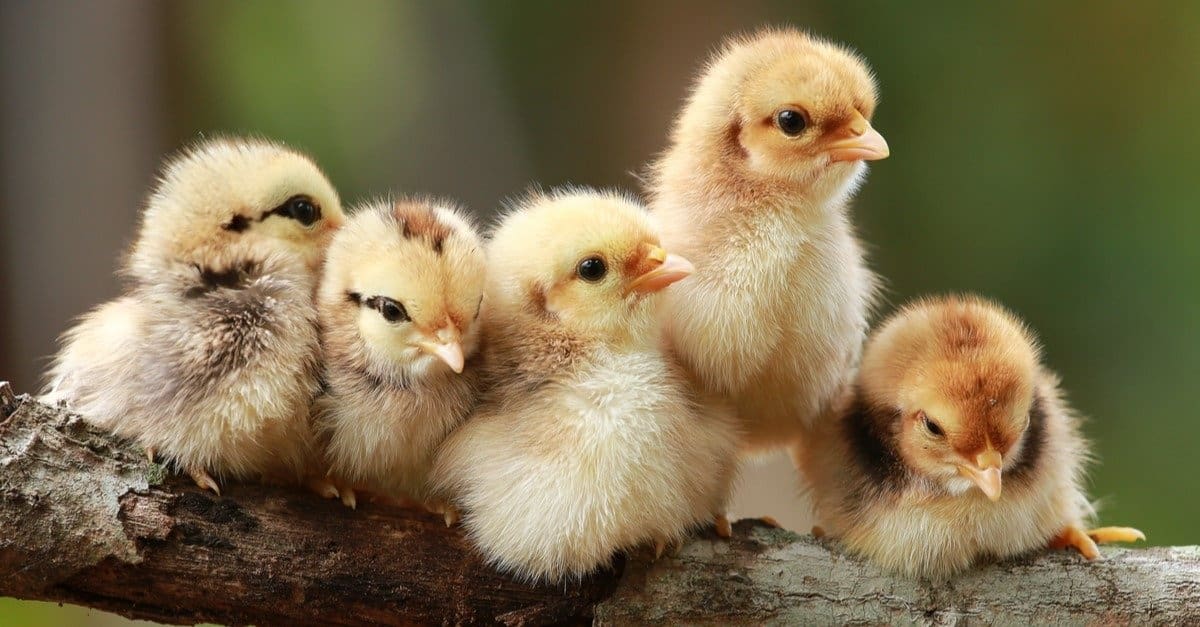If someone told you to think of an animal when you heard the word farm, one of the names that would most likely pop up would be a chicken. While we have heard of chickens, distinguishing and knowing the differences between a rooster and a hen is important. Let’s dive into their distinctions and also their differences as babies.
In case you didn’t know, roosters and hens are chickens! So when you hear the term “chickens,” that is a very broad term for both male and female chickens. The equivalent of us saying “humans” refers to people, even though there are males and females.
A rooster is strictly a male chicken, and a hen is exclusively a female chicken. These two animals have many physical differences that are easy to spot once they have grown. Perhaps the most common differences we know from childhood books are that rooster’s crow in the morning and hens lay eggs.
However, that is not all that separates the male and female chickens. Let’s take a look at the rooster.
Rooster Facts

Roosters can run up to 9 miles per hour.
©FiledIMAGE/Shutterstock.com
A rooster can grow to 3 feet high, and their weight can fluctuate anywhere from 6-12 pounds. He has a beautiful red comb, and this flesh sits on top of his head, which for many people, is how they distinguish the rooster from a hen at first glance.
A rooster is much more slender and has an upright stance compared to the female. As the male, the rooster will be protective over the other hens. They will also ensure that the dominant females eat first. This is referred to as the “pecking order.”
This pecking order is merely a term for their hierarchy as animals. They each have a place, and the chickens know it.
A rooster likes to often forage for his food and is seen eating insects, seeds, worms, and commercial feed.
Even though the rooster is the dominant one, he still has predators he has to look out for. The threats to a rooster’s livelihood are foxes, coyotes, and raccoons. However, the most dire threat to the rooster is humans. Not only do we slaughter them for food, but humans also use them sadly for cockfighting.
Hen Facts

Chicken’s is the world’s most common bird.
©Nellie Thorngate/Shutterstock.com
As the female gender of the chicken, they are the weaker sex; however, they are some tough little birds and not to be taken lightly. These female chickens can run up to 6 miles per hour and typically weigh from two to four pounds lighter than a rooster. Although that number, of course, can fluctuate based on their breed.
Chickens eat many of the same foods as roosters, such as insects, commercial feed, and seeds.
Their stature is shorter and more stubby when compared to the rooster. They have shorter tails and thinner legs as well.
These hens will typically lay about six eggs per week. That is about 312 eggs per year! An estimated 33 billion chickens are alive today as of 2023, which makes the number of eggs laid yearly astounding.
Differences Between Baby Roosters and Baby Hens

Chicken’s have clear communication that results in
30
different sounds.
©Majna/Shutterstock.com
Now that we have looked at some basic differences between roosters and hens, let’s look at some differences between them as babies.
A baby rooster and a baby hen have different names.
A baby rooster is referred to as a cockerel. A shorter term would be considered a “cock.” However, because that is considered a rude term, it is most common to hear the name cockerel when referring to a baby rooster.
A baby hen is referred to as a pullet. She is a female chicken that is less than a year old.
You cannot tell their gender apart at birth.
Unlike dogs or cats, we cannot simply look at their underparts and know what gender they are. It can take more than two months at times to know the gender of the chicken.
There is a very fine process called “sexing chickens.” This is something that professionals who have studied how to properly determine the sex of a chicken know how to do, and not something a random person or even farmer without this knowledge should attempt to do. Sexing a chicken incorrectly could end in the little chick’s death.
Their physical looks start to change.
After several weeks, we will notice some physical differences, such as the cockerel’s comb will darken. And his legs will start to thicken up. This is a great way to start being able to tell the gender of chickens if you haven’t had them professionally “sexed.”
Hens lay eggs, roosters do not.
Even though we did discuss this earlier, what is amazing to know is that hens will start laying eggs at six months old! (It never ceases to amaze us this animal’s beauty and capabilities.)
While researching, it is often difficult to determine many differences between a baby rooster and a baby hen due to the inability to distinguish their gender once they are hatched; the differences become much more apparent once they get start to grow.
Thank you for reading! Have some feedback for us? Contact the AZ Animals editorial team.








